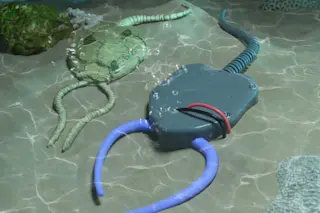Airman 1st Class Steven (left) and Airman 1st Class Taylor prepare an MQ-9 Reaper for flight during exercise Combat Hammer, May 15, 2014, at Creech Air Force Base, Nev. Credit: U.S. Air Force photo/Staff Sgt. Nadine Barclay Drone pilots represent one of the most crucial and under-appreciated elements of the U.S. military's operations across the world. They provide hours of support in watching over U.S. troops on the ground, searching for enemy targets and sometimes launching missile strikes. But the new age of robotic warfare is straining human limits — the U.S. Air Force fears that the growing demand for having more drones in the air around the clock is pushing its drone operators to the breaking point. The Air Force has struggled to train enough pilots to remotely operate its MQ-1 Predator and MQ-9 Reaper aircraft for years. It has scrounged for new pilots by partially cannibalizing its training ...
Drone War Pushes Pilots to Breaking Point
Discover the challenges drone operators in the U.S. military face as demands for coverage increase and morale drops. Read more!
More on Discover
Stay Curious
SubscribeTo The Magazine
Save up to 40% off the cover price when you subscribe to Discover magazine.
Subscribe













